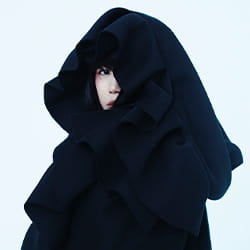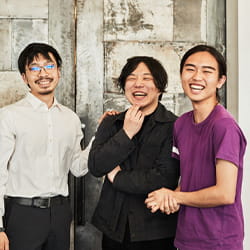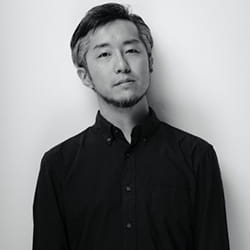Histopolis — Extinction and Regeneration
Histopolis — Extinction and Regeneration
For science can only ascertain what is, but not what should be, and outside of its domain value judgments of all kinds remain necessary.
― Albert Einstein
― Albert Einstein
Exhibition Outline
Today, developments such as artificial intelligence, genome editing, and nuclear energy (operational in Japan since 1963) demonstrate the unprecedented impact that science and technology have on our society, affecting our politics, economy, and social systems. Although these technologies provide solutions to problems that face humanity, they lead to new, more complex issues. We are also affected by infectious diseases caused by viruses, which have been of concern since the Neolithic Revolution some 12,000 years ago when human behavior patterns changed, bringing populations closely together to form agricultural communities. In February 2020, Nature magazine reported on sequencing and analysis of the viral genome of a new virus discovered in China, based on specimens taken from the first known patient with the severe respiratory disease that it caused, said to be a worker at a seafood market. Analysis revealed that the virus was most closely related to a group of SARS-like coronaviruses that had previously been found in bats in China. The new virus, a novel coronavirus later named COVID-19, has rapidly spread around the world, causing a pandemic. Given this situation, it is important to look back and remember why it was decided to organize this exhibition.
Histopolis—Extinction and Regeneration is planned and curated by guest curator Yohsuke Takahashi and Takayo Iida (supervisor of the exhibition and director of the Sgùrr Dearg Institute for Sociology of the Arts). A new form of nature is emerging—industrially designed, and of a different dimension to that of nature as we knew it. At the same time, technology is currently blending into life and into the ecosystem, and all sorts of things are being eroded. Given those circumstances, we are exploring the extent to which humanity has to face up to the risk of human extinction. Furthermore, by revealing a small part of the historical background that undergoes transformation amid chaos, the exhibition—through the works of the participating artists—attempts to see how far humanity’s raison d’être in global history can be linked to the prospects for our future.
Histopolis—Extinction and Regeneration is planned and curated by guest curator Yohsuke Takahashi and Takayo Iida (supervisor of the exhibition and director of the Sgùrr Dearg Institute for Sociology of the Arts). A new form of nature is emerging—industrially designed, and of a different dimension to that of nature as we knew it. At the same time, technology is currently blending into life and into the ecosystem, and all sorts of things are being eroded. Given those circumstances, we are exploring the extent to which humanity has to face up to the risk of human extinction. Furthermore, by revealing a small part of the historical background that undergoes transformation amid chaos, the exhibition—through the works of the participating artists—attempts to see how far humanity’s raison d’être in global history can be linked to the prospects for our future.
-
-
Etsuko Yakushimaru
Photo: Shino Yanai
© 2017 Yakushimaru Etsuko
-
Synflux -
Yusuke Suga
And finally, we must sound a warning regarding science and technology and its boundless development. When energy issues and the issue of whether nuclear power is actually necessary were under discussion in Germany in 1986, sociologist Ulrich Beck* used the term “risk society” to describe our society’s approach of using science and technology to control the risks of science and technology. His warning needs to be firmly imprinted in our minds. It is highly relevant because, ever since 3.11, people in Japan have felt uneasy about our future due to the presence of nuclear plants and other black boxes driven by high technology. And it has become even more pressing with the spread of the COVID-19 coronavirus. Issues of human extinction and regeneration are now very much a practical concern, as are the concepts of necropolis (city of the dead) and histopolis (city of tissue culture—a place of eternal growth).
Takayo Iida (director of the Sgùrr Dearg Institute for Sociology of the Arts)
Takayo Iida (director of the Sgùrr Dearg Institute for Sociology of the Arts)
* Ulrich Beck (1944-2015)
Born in what is now northern Poland. Became professor at Münster University and other institutions, including Centennial Professor at the London School of Economics and Political Science (LSE). One of Germany’s best-known sociologists. Author of Risk Society (1986), a warning of the risks facing today’s society, and The Terrorist Threat: World Risk Society Revisited (2002). Member of the Ethics Commission for a Safe Energy Supply, an advisory body established by the German government in the wake of the 2001 nuclear accident in Fukushima.
Born in what is now northern Poland. Became professor at Münster University and other institutions, including Centennial Professor at the London School of Economics and Political Science (LSE). One of Germany’s best-known sociologists. Author of Risk Society (1986), a warning of the risks facing today’s society, and The Terrorist Threat: World Risk Society Revisited (2002). Member of the Ethics Commission for a Safe Energy Supply, an advisory body established by the German government in the wake of the 2001 nuclear accident in Fukushima.
- Etsuko Yakushimaru
-
 Artist and producer heading numerous projects, including those involving her band, Soutaiseiriron. Working across genres, including music ranging from popular to experimental music, art, technology, writing, and fashion, she remains consistently independent. Here creations include a project that involved the use of satellite and biological data, a song-generating robot utilizing AI and her own voice, and she has produced original music and independently developed a VR system. Her I’m Humanity (music mediated by bio-technology) was awarded the Ars Electronica STARTS Grand Prize. I’m Humanity ver. Kanazawa was the first pop music/bio-art work to be added to the collection of the 21st Century Museum of Contemporary Art, Kanazawa. Recent work includes exhibitions such as Where We Now Stand—In Order to Map the Future (21st Century Museum of Contemporary Art, Kanazawa, 2019), Future and the Arts (Mori Art Museum, 2019-2020), and releases such as “Shiraberu Soutaiseiriron” (2019), “Unknown World Map” (2019), and “Human Is (feat. Fennesz)” (2019).
Artist and producer heading numerous projects, including those involving her band, Soutaiseiriron. Working across genres, including music ranging from popular to experimental music, art, technology, writing, and fashion, she remains consistently independent. Here creations include a project that involved the use of satellite and biological data, a song-generating robot utilizing AI and her own voice, and she has produced original music and independently developed a VR system. Her I’m Humanity (music mediated by bio-technology) was awarded the Ars Electronica STARTS Grand Prize. I’m Humanity ver. Kanazawa was the first pop music/bio-art work to be added to the collection of the 21st Century Museum of Contemporary Art, Kanazawa. Recent work includes exhibitions such as Where We Now Stand—In Order to Map the Future (21st Century Museum of Contemporary Art, Kanazawa, 2019), Future and the Arts (Mori Art Museum, 2019-2020), and releases such as “Shiraberu Soutaiseiriron” (2019), “Unknown World Map” (2019), and “Human Is (feat. Fennesz)” (2019). - Jalila Essaïdi
-
 Artist/entrepreneur. CEO of biotechnology company Inspidere B.V., based in Eindhoven, the Netherlands. Born in 1980. Specialized in the fields of bio-based materials and bio-art, and best known for her work 2.6g 329m/s, also known as Bulletproof Skin, a project that achieved bioengineered bulletproof human skin. Major awards include the H&M Global Change Award in 2017, the Chivas Venture Award and the Green for Growth Fund Clim@ competition in 2018. In 2011, she founded BioArt Laboratories, a foundation that offers entrepreneurs and citizen scientists access to a biotech laboratory and the tools and knowledge of cross-sectorial collaborations between the life sciences and the creative industry.
Artist/entrepreneur. CEO of biotechnology company Inspidere B.V., based in Eindhoven, the Netherlands. Born in 1980. Specialized in the fields of bio-based materials and bio-art, and best known for her work 2.6g 329m/s, also known as Bulletproof Skin, a project that achieved bioengineered bulletproof human skin. Major awards include the H&M Global Change Award in 2017, the Chivas Venture Award and the Green for Growth Fund Clim@ competition in 2018. In 2011, she founded BioArt Laboratories, a foundation that offers entrepreneurs and citizen scientists access to a biotech laboratory and the tools and knowledge of cross-sectorial collaborations between the life sciences and the creative industry. - Synflux
-
 Speculative fashion laboratory established by fashion designers Kazuya Kawasaki, Kotaro Sano, and research engineer Kye Shimizu. Explores creative thinking in the context of fashion, through projects such as research into the Algorithmic Couture design system which uses machine learning algorithms to create fashion, and the development of a customization platform to embody the next-generation paradigm for prêt-à-porter fashion. Major awards include the H&M Foundation Global Change Award, Dezeen Award Design Longlist and the Wired Creative Hack Award. Recent exhibitions include Making Fashion Sense (2019, Basel, presenting AUBIK in collaboration with HATRA).
Speculative fashion laboratory established by fashion designers Kazuya Kawasaki, Kotaro Sano, and research engineer Kye Shimizu. Explores creative thinking in the context of fashion, through projects such as research into the Algorithmic Couture design system which uses machine learning algorithms to create fashion, and the development of a customization platform to embody the next-generation paradigm for prêt-à-porter fashion. Major awards include the H&M Foundation Global Change Award, Dezeen Award Design Longlist and the Wired Creative Hack Award. Recent exhibitions include Making Fashion Sense (2019, Basel, presenting AUBIK in collaboration with HATRA). - BCL/Georg Tremmel
-
 Born in Austria in 1977. Graduated from University of Applied Art in Vienna 2001 and gained a masters in interaction design from the Royal College of Art in London in 2003. In 2004, formed the artistic collaborative research framework BCL with Shiho Fukuhara in London. With biotechnology as his principal theme, he explores the relationship of human awareness with nature, society, and our cultural environment. Recent exhibitions include La fabrique du Vivant (Centre Pompidou Paris, 2019), Frankenstein in 2018: Bio-art throws light on art, science, and society today (Eye of Gyre, Tokyo, 2018), Ars Electronica STARTS Prize Exhibition (Linz, Austria, 2019), and Where We Now Stand—In Order to Map the Future (21st Century Museum of Contemporary Art, Kanazawa, 2019).
Born in Austria in 1977. Graduated from University of Applied Art in Vienna 2001 and gained a masters in interaction design from the Royal College of Art in London in 2003. In 2004, formed the artistic collaborative research framework BCL with Shiho Fukuhara in London. With biotechnology as his principal theme, he explores the relationship of human awareness with nature, society, and our cultural environment. Recent exhibitions include La fabrique du Vivant (Centre Pompidou Paris, 2019), Frankenstein in 2018: Bio-art throws light on art, science, and society today (Eye of Gyre, Tokyo, 2018), Ars Electronica STARTS Prize Exhibition (Linz, Austria, 2019), and Where We Now Stand—In Order to Map the Future (21st Century Museum of Contemporary Art, Kanazawa, 2019). - Guy Ben-Ary
-
 Artist and researcher based in Perth, Australia. He currently works at SymboticA, an artistic laboratory dedicated to research, learning, and hands-on engagement with the life sciences (located within the University of Western Australia). Significant exhibitions include the São Paulo Biennial and the Moscow Biennale . His work can be seen in the permanent collection of the Museum of Modern Art in New York. Major awards include an Honorary Mention in Prix Ars Electronica (2017, 2019) and first prize at VIDA, a significant international competition for Art and Artificial Life.
Artist and researcher based in Perth, Australia. He currently works at SymboticA, an artistic laboratory dedicated to research, learning, and hands-on engagement with the life sciences (located within the University of Western Australia). Significant exhibitions include the São Paulo Biennial and the Moscow Biennale . His work can be seen in the permanent collection of the Museum of Modern Art in New York. Major awards include an Honorary Mention in Prix Ars Electronica (2017, 2019) and first prize at VIDA, a significant international competition for Art and Artificial Life. - Yusuke Suga
-
 Born in 1984. Gained an MA in sculpture from Tokyo University of the Arts in 2010. Solo exhibitions include GHOST ROAMING (LAGE EGAL, Berlin, 2016), Modification of destiny (LEESAYA, Tokyo, 2019). Group exhibitions include Duality of Existence (Friedman Benda, New York, 2014) and Takamatsu Contemporary Art Annual vol.06—Materials That Tell Stories (Takamatsu Art Museum, Kagawa, 2017).
Born in 1984. Gained an MA in sculpture from Tokyo University of the Arts in 2010. Solo exhibitions include GHOST ROAMING (LAGE EGAL, Berlin, 2016), Modification of destiny (LEESAYA, Tokyo, 2019). Group exhibitions include Duality of Existence (Friedman Benda, New York, 2014) and Takamatsu Contemporary Art Annual vol.06—Materials That Tell Stories (Takamatsu Art Museum, Kagawa, 2017).
Histopolis — Extinction and Regeneration
- Organizer
- GYRE/Sgùrr Dearg Institute for Sociology of the Arts
- Period
- June 8 (Mon) – September 27 (Sun), 2020 / 11:00 – 20:00 / Open daily / Free admission
- Venue
- GYRE GALLERY, 5-10-1 Jingumae, Shibuya-ku, Tokyo
- Contact
- 03-3498-6990
- Supervision
- Takayo Iida (director of the Sgùrr Dearg Institute for Sociology of the Arts, director of GYRE GALLERY )
- Curator
- Yohsuke Takahashi (curator)
- Design
- Rikako Nagashima (Village ®)
- Installation cooperation
- Issay Narumi (dean of Life Sciences at Toyo University, researcher into radioresistant bacteria)
- Installation
- Suga Art Studio
- Cooperation
- MIRAI Records, HiRAO INC
- Press Contact
- HIRAO INC, Tel:03-5771-8808 email: mifune@hirao-inc.com
- Participating artists
- Etsuko Yakushimaru, Jalila Essaïdi, Synflux, BCL/Georg Tremmel, Guy Ben-Ary, Yusuke Suga